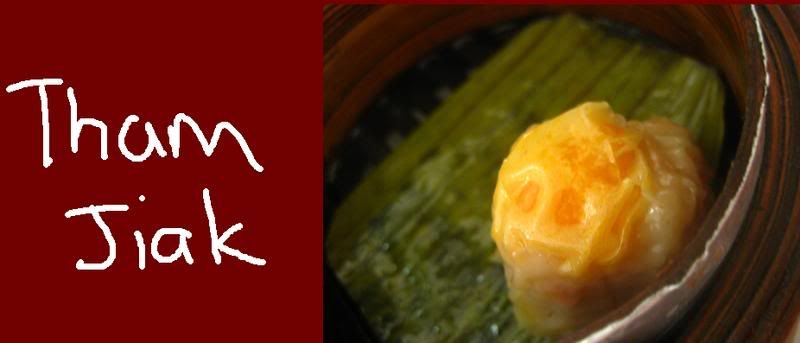Anyway speaking of writing, recently I have just went to a cooking demo by Chef Federico Michieletto, a corporate chef for the infamous Tai Thong group in Malaysia that had just recently launched a cookbook named Pasta My Italy. This Italian Pastas and Desserts cooking demo was actually organized by my high school, Convent Taiping’s alumni. At first I was a tad bit lazy to go all the way to KL of a place I do not know of early in the morning but luckily a close friend of mine is to take pictures of the event, therefore I chug alongside happily. Armed with the map in my PDA (which shocked my friend who said she is still all pen-and-paper girl); we got to the place with another friend in time for the demo.
It started with the Chef introducing himself where he also brought along a sidekick, named Ming (who reminds me of one celebrity chef) and I found the Chef really funny and charming while his sidekick was quiet. We started off with desserts as both of them requires some chilling time to be done, so we hoped to have it set by the time we finish our session. It was more than I can hope for to kick start with my favourite parts, especially the Chef from Italy himself is to show us the classic Tiramisu! Something I had always wanted to make but never quite did, which now I should kick myself for as it is really so easy! All you need is a good recipe, strong arms for whipping and you are all done, oh and don’t forget the fridge. Then he also shows us the basic version of panna cotta served only with fresh fruits (Chef said that this is how they like it in Italy), a taste of it was certainly a surprise to me as it was really creamy, smooth and soft, do not judge a book by its cover!
To sum up the lessons for desserts:

2. Hand whipping of cream produce superior results than machine, besides the point where you can easily over-whipped with a machine where when it does, the cream will split and all is lost. As the chef continued to explained, cream is made up of fat and water, and when it split, technically you have just remove the water and accidentally made butter! Nothing too bad but that is not what you want for Tiramisu eh?
3. Just dip the sponge fingers quickly in the espresso each time, where if you snap it in half you can see that the inside are still dry and hard, this is what you want as later on it will soak on all the liquid goodness from the cheese and cream and becomes soft and yummy like how a Tiramisu should be.

2. Hold the pasta together and lower it into the middle of the pot and then let go to flow all around like flowers – the right way to boil pasta
4. Classic carbonara does not have cream in it (in fact loads of egg yolks) and therefore should be yellowish in oppose to white sauce ones which we found in most carbonara dishes out in the restaurants in Malaysia
5. Carbonara loves black pepper a lot
6. One trick from Chef is that they usually reuse the water used to boil the pasta during the cooking of the sauce – later on deduce by me to have the bit of pasta flavor in as well as clever reuse of the salty water plus bringing some of the ‘flour’ from the pasta into the sauce to make more smooth
7. Oh and by the way, Chef said to boil pasta with added salt, usually in ratio of 5 parts water with 1 part salt (very much more than I have ever used!)
8. For the Aglio Olio, it is usually just plain garlic and olive oil but Chef found that Malaysians love more flavors, thus he usually adds in some chopped chilies, dried chili flakes, chopped parsleys and torned basil leaves
9. Oh ya, basil leaves are usually add in at the end, torned and never cut/slice to retain its natural flavor (mm, I love basil! Think Thai)
10. Arrabiata means angry therefore he named the dish Penne Arrabiata as “Angry Penne”, which I found amusing
11. One more special trick from Chef is that the pit inside the garlic is the main reason of the smell that lingers in your mouth, so remove it if you want to have loads of garlic but still kiss after dinner
12. We should also try to remove the seeds from the chilies and the chilies flakes as it is hard to digest
Update: Recipes can be found at our Convent Taiping Alumni blog.















